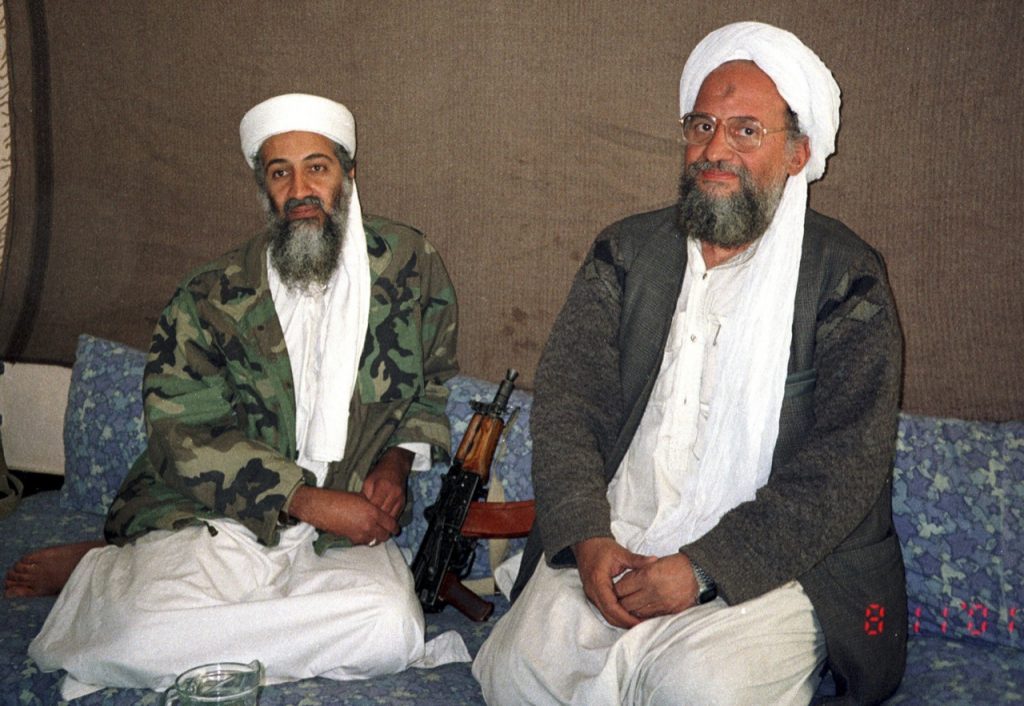Pax et Bellum | Analysis, Barbara Magalhães Teixeira, Civil Wars, Middle East and North Africa, Rebel Recruitment |
The TED Talk of Manwar Ali, filmed in April 2016, touches upon a central subject in Peace and Conflict Research: rebel recruitment. He is a former jihadist that shares his experience of joining a rebel group and risking his life for a cause. Through his testimony, we get access to what goes on inside the mind of an individual that makes him join a rebel group. The field of Peace and Conflict Research has battled with this phenomenon trying to understand what causes individuals to voluntarily risk their lives in war. More specifically, we are interested in explaining the voluntary part that drives individuals to join armed conflicts, and for this, we will use the Collective Commitment Theory to try and explain it through the experience of Ali and the case of Al-Qaeda. This remains one of the most asked questions in our field, and this is an attempt to shed more light in the path towards the answer.
The Collective Commitment Theory
Ginges and Atran, in their study of 2007 titled “What motivates participation in violent political action: selective incentives or parochial altruism?” argue that the explanation of the existence of private selective incentives to participants to join armed conflict is not enough for their recruitment. They argue that the model of rational decision making focuses much on the utility maximization and fails to explain the moral commitments of fighting (and possibly dying) for a cause. The authors suggest that in some types of conflict the decisions made by the individuals are more related to intuitive moral decision making. They found that “when people cognitively transform issues under dispute into sacred values […] [they] often resist any attempts to balance a compromise over such values with material incentives.” (Ginges; Atran, 2007).
In this context, we can find that in some cases people do not join rebels groups in armed conflict because there is a posterior material reward, or because there was something to win by fighting, but because there is a strong link between the individual and the community that they feel like they belong to. As C.G. Jung formulated about the commonly shared feelings known as “collective consciousness”, he explains that when it is “utilized towards specific goals, this can serve as a powerful instrument to drive people to commendable activities or heroism, or move them to destructive behavior at critical moments of human society or community.” (Hellmich, 2006).
When an individual has a shared identity with a collective, it is safe to say that is a predictor of their participation or political support, in the sense that the higher someone identifies with a group, the more likely she or he is to join in, but it may not be enough. While testing their hypothesis, Ginges and Atran (2007) came to the conclusion that when people were reasoning between duty to war or to their family, they were not acting by the rational model of decision making, but were rather based on the perceptions of their moral obligations to the community. In this case, when their community identification is high and there is a shared communal moral, the authors found that the family of a fighter saw the request for material compensation as a taboo. And the higher the compensation requested was, the higher were the disapproval rates.
In this context, we can assume that the selective incentives are not important factors for participation in certain cases where there is a high level of group identification, especially if the conflict is linked to cultural-religious-political reasons. In the same line of argument, Isaac’s (2016) study on religious rhetoric points out that often enough rebel groups realize the importance of the shared set of moral values by a group and their inclination to join in armed conflict, they might use it for recruitment. He argues that religion has a positive effect on the recruitment of fighters, because it is often a connection between the individuals in a group, and it facilitates the perception of group belonging and prevents desertions. In this way, we can infer that religion works as a set of shared moral values that motivated people to fight to protect it. (Isaac, 2016).
In this case, I would add that the motivation to collective action appears when the group is faced with an external actor that does not share the same set of moral values, or that threatens its existence. Violent collective action in this case is motivated by collective concerns, and the higher the priority given to those communal concerns, and the use of religious rhetoric behind it, the higher the probability of individuals joining.

The case of Al-Qaeda
The initial purpose of Ginges and Atran’s (2007) study was to show a different motivation for individuals to participate in violent collective action than just selective incentives. When applying this theory to the case of Al-Qaeda, it is clear that their recruitment is largely based on a set of shared moral values, in relation to material incentives. We don’t think of Al-Qaeda as buying off impoverished civilians to die for their cause, especially because of the dying characteristic of their cause. Al-Qaeda has a strong commitment to their values, and this leads us to assume that “it is rather doubtful that AQAP […] would resort to such a precarious recruitment method” like material incentives. (Eleftheriadou, 2014).
Al-Qaeda has a strong ideology of protecting the umma – the Muslim community regardless of ethnic origin – and of doing what is honorable and expected under the Islamic Law. In this case, it focuses on the duty of every good Muslim to “obey God and his Messenger” and to protect Islam and its principles against the threat of the non-believers. Al-Qaeda combines the use of the strong moral commitment of Islam and their political view of the injustice suffered by the Muslim population all across the Middle East by calling people into action convincing them that they are following the will of Allah. (Hellmich, 2006).
Although one can argue that Al-Qaeda uses religion and eternal salvation as an incentive for people to fight, it firstly speaks to the already shared identity and grievances felt by the Muslim population as a community, and not restricted to their individual man-made states. As Christina Hellmich (2006) points out about Al-Zawahiri, one of the leaders of Al-Qaeda, “his decision to join Al-Qaeda was based on the belief that the Islamic fundamentalist groups within their individual states were prevented from achieving any significant change on the domestic fronts because of a common external enemy.” (Hellmich, 2006). In this way, the individuals see Al-Qaeda as the meeting point between strong religious sentiments and the desire to fight the threat of the “real enemy” of Muslims in general.
As Manwar Ali shared in his TED Talk, “Our aim was to remove the invaders, to bring relief to the oppressed victims and of course to establish an Islamic state, a caliphate for God’s rule.” He added that his intentions came from the combination of his moral and religious beliefs and the perception that Muslims around the world were suffering in the hands of invaders. “I tried to right wrongs through power and aggression. I had deep concerns for the suffering of others and a strong desire to help and bring relief to them. I thought violent jihad was noble, chivalrous and the best way to help.” He explains that his own experiences of the atrocities of war shaped his view and awareness of the injustices in the world. “So I became involved in the jihad in Afghanistan. I wanted to protect the Muslim Afghan population against the Soviet army. And I thought that was jihad: my sacred duty, which would be rewarded by God.”
Al-Qaeda systematically points out the enemy using strong words such as “crusader” and “invader”, evoking memories and symbols from the collective consciousness of the Muslim community. The “real enemy” is the US, because of its counterterrorism campaigns in the region of the Middle East which ignite the negative image and perception of threat by the Muslim population. A member of AQAP, the branch of Al-Qaeda in Yemen, when talking to a journalist about the drone bombings in country, said that he was proud to be a target of an American drone, because this means he is a “worthy enemy of America”, and an honorable fighter for Islam. He said: “Look this is a weak government, this government is being controlled by the Americans. The government they are lying, they’re saying we’re bombing al Qaeda but really it’s the Americans”. (Abdul-Ahab, 2012). Another member stated that “until America stops forcing democracy on us, we will continue to fight. We don’t want democracy. We want to be left alone.” (Coombs, 2012).
Ali stated that when he was fighting for the organization he was recognized by his community, “people supported, applauded, even celebrated what we were doing in their name”, because it meant that he was fighting for the whole group. (Ali, 2016). What we can reflect upon in Manwar Ali’s testimony is how a set of collective moral values can influence individuals to join rebel groups that fight to protect it. Manwar Ali’s shared experience, with the enlightenment of Ginges and Atran’s and Isaac’s theories help us understand one of the many possible explanations to why individuals join rebel groups. Different levels of priority to the shared moral values may lead to different results in rebel recruitment, and it is not correct to say that all people who share those values will join a rebel group. With this study, we can better understand why people in these conditions would join rebel groups, but we still do not know why the majority do not.
Rebel recruitment remains an interesting puzzle in the field of Peace and Conflict Studies, and we believe that understanding why some people are radicalized and join violent collective action is important, and we encourage more scholars to look into this cause, as we will continue to do.
Barbara Magalhães Teixeira
*Barbara is a student at the Master Programme in Peace and Conflict Studies at Uppsala University.
The blog is run independently of the Department of Peace and Conflict Research in Uppsala. The Pax et Bellum Editorial Board oversees and approves the publication of all posts, but the content reflects the authors’ own perspectives and opinions.
References
- Abdul-Ahab, Gaith (2012). Al-Qaeda in Yemen. [Documentary]. Frontline. Available at: http://www.pbs.org/wgbh/frontline/film/al-qaeda-in-yemen/
- Ali, Manwar (2016). Inside the mind of a former radical jihadist. TED Talk. Available at:http://www.ted.com/talks/manwar_ali_inside_the_mind_of_a_former_radical_jihadist/transcript?language=en#t-20180
- Coombs, Caisey S. (2012). Land of the Black Flag. Foreign Policy. Available at: http://foreignpolicy.com/slideshow/land-of-the-black-flag/
- Eleftheriadou, Marina (2014). Elements of ‘armed non-state actors’ power: The case of al-Qaeda in Yemen. Small Wars & Insurgencies, 25:2, 404-427, available at: http://www.tandfonline.com/doi/abs/10.1080/09592318.2014.903936
- Ginges, Jeremy; Atran, Scott (2009). What Motivates Participation in Violent Political Action: Selective Incentives or Parochial Altruism? Annals of The New York Academy of Sciences. Vol 1176, Issue 1, 115-123. Available at: http://onlinelibrary.wiley.com.ezproxy.its.uu.se/doi/10.1111/j.1749-6632.2009.04543.x/abstract
- Hellmich, Christina (2010). The physiology of Al-Qaeda: from ideology to participation. Understanding Violent Radicalisation: Terrorist and Jihadist Movements in Europe 68-86.
- Isaacs, Matthew (2016). Sacred violence or strategic faith? Disentangling the relationship between religion and violence in armed conflict. Journal of Peace Research. Vol. 53(2) 211–225. Available at: http://jpr.sagepub.com/content/53/2/211.abstract

